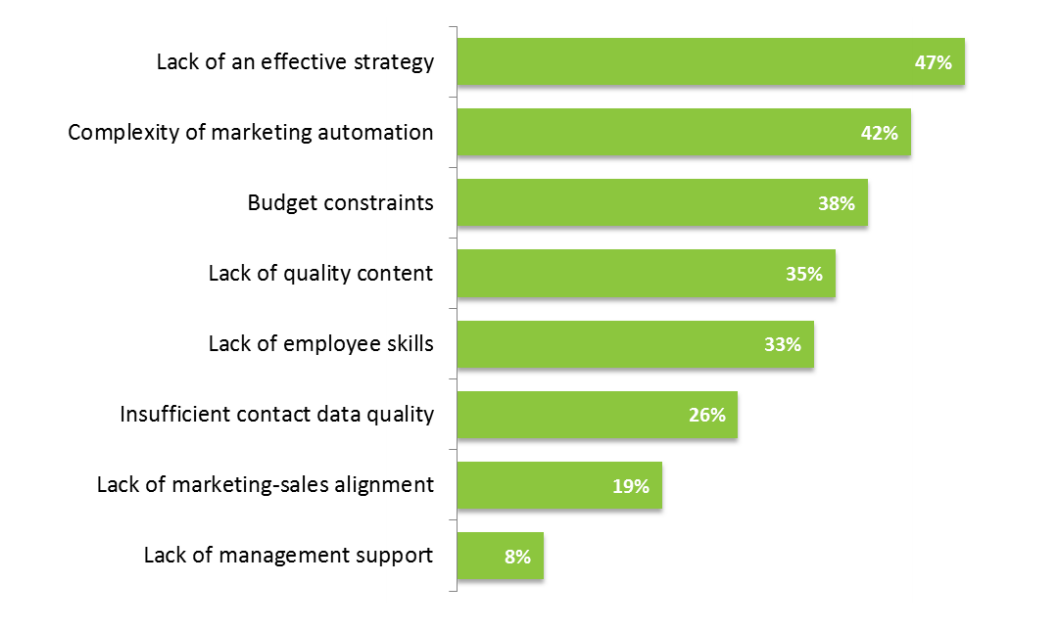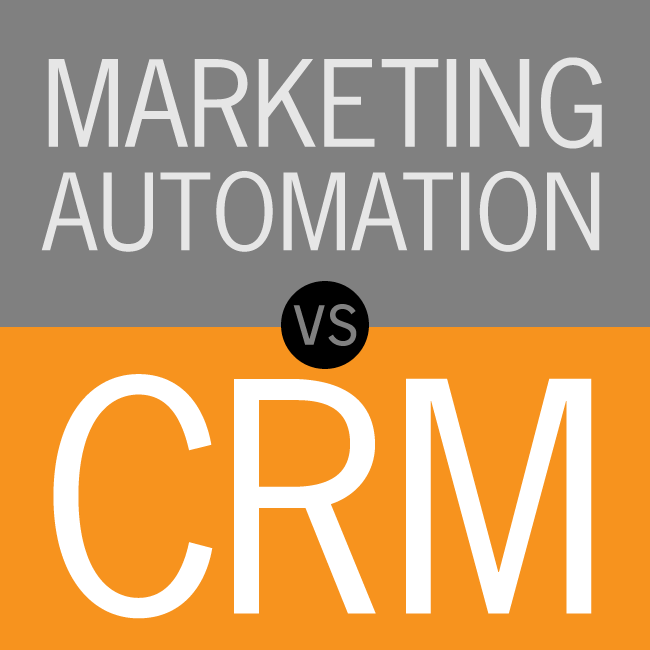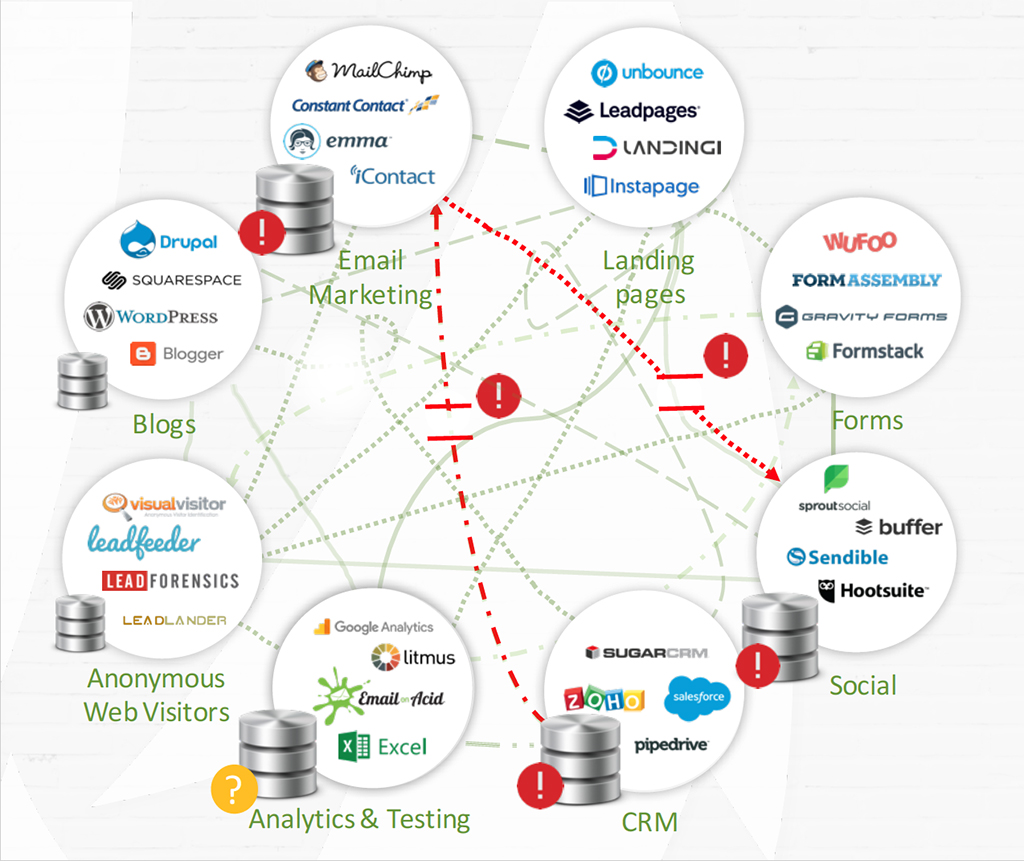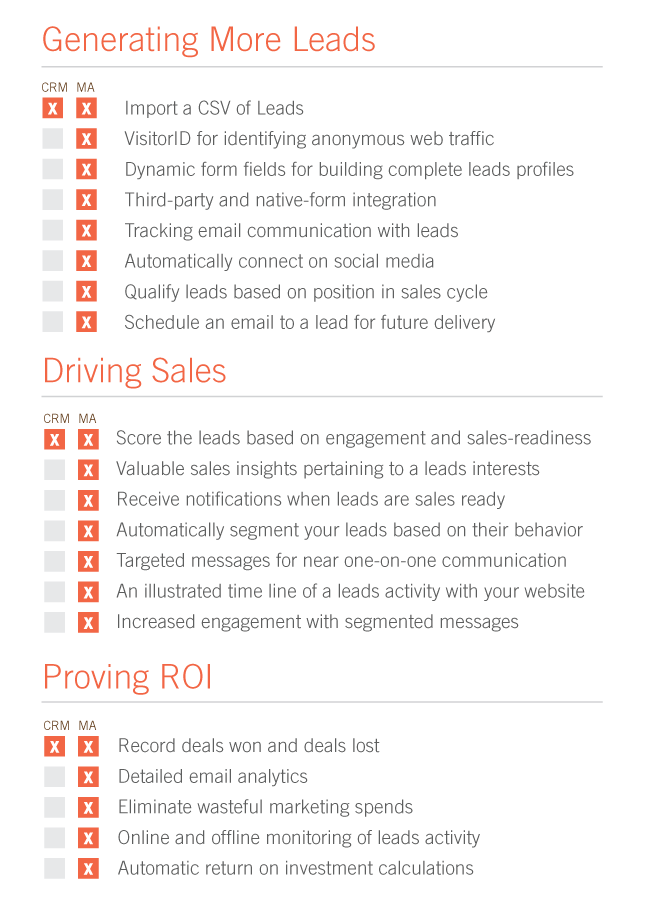Content Marketing Institute | CMI Chief Strategy Officer and online marketing guru, Robert Rose, shared an interesting perspective with me at a recent Bay Area gathering. He said, “Marketing—especially online marketing—isn’t getting any easier today”. His comment couldn’t be more true—or timely.
As proof, inbound marketing, marketing automation and CRM software choices have increased dramatically as more and more organizations turn to content marketing as their preferred method to both attract and retain customers. The result of this rise in choice—and software category terms—is more confusion and misunderstanding than ever before.
Recent research from Ascend2 with over 50K international marketing, sales and business executives reveals that increased revenue is the primary reason more and more organizations are interested in adopting marketing automation.
What’s more, organizations of all sizes are actively looking for resources that can help them develop an effective online marketing strategy with the skills and expertise to implement marketing automation software. The research data confirm that selecting and integrating CRM, inbound marketing and marketing automation software is a growing challenge for businesses of all sizes. And it’s one that won’t be resolved quickly or easily.

Inbound marketing? CRM? Marketing Automation? What’s up?
Today, the software required for success with content marketing raises plenty of questions. For example, should an organization use just CRM software, inbound marketing or marketing automation software alone to achieve its objectives?
Understanding the differences and similarities between each of these different kinds of software and terms is a great place to start to find answers.

1. | Inbound Marketing
Inbound marketing (also frequently referred to as Content Marketing) promotes the value of an organization through methods and techniques such as blogging, email, SEO, social media and creation of many other types of digital content. The objective of these activities and techniques is to attract customers in the consideration and evaluation stage of a purchasing process. Over time, inbound marketing can turn a prospect into a paying customer.
Inbound marketing and the software required for it is intended to attract online visitors to an organization’s value rather than pushing them away with traditional, interruptive and frequently annoying advertising methods.
The result of inbound marketing draws visitors to a website, makes the site easy to find online, and helps to earn the attention of prospects who have an identified need or face a self-recognized challenge. All of this is accomplished by producing, optimizing and distributing a wide variety of content that informs or entertains a targeted audience including videos, blogs, white papers, podcasts, infographics, case studies and more.
With inbound marketing, organizations must “earn their way in” to a prospect’s consideration. This differs dramatically with traditional outbound marketing, where brands “buy, beg, or bug their way in” through paid advertising, producing and distributing press releases, or paying commissioned salespeople to make cold-calls—all in the hope of finding an interested prospect.
According to many software providers like SharpSpring or Hubspot, inbound marketing is especially effective for organizations that sell highly-considered, high-priced products or services that have long sales cycles in competitive categories. With these kinds of solutions, prospects are more likely to become self-informed and consider or select someone who demonstrates expertise and understanding of their unique needs.
2. | Marketing Automation
Marketing Automation focuses on improving the marketing process to make it more effective and efficient. By integrating functions such as scoring a lead or customer’s behavior, marketing automation software allows a business to adapt marketing campaigns in a more tailored way to engage customers and prospects at the right time with the right content to move them through the journey to becoming a customer. The goal of marketing automation is to nurture a sales lead into a converted customer.
Inbound software coupled with content marketing techniques can drive traffic to a website. And once the prospect arrives, marketing automation can help enhance conversion of the site visitor to the desired action.
As each of these software types has evolved, there is a growing overlap in features and functionality. The result is varying levels of integration between these now essential software tools.
3. | CRM
Customer relationship management | CRM is defined as an approach to managing a company’s interaction with current and future customers.
CRM software analyzes data about a customers’ history with an organization’s relationship with each customer. The goal of this software approach is to retain customers in order to enhance sales growth. As a result, CRM software stores valuable customer information like names, addresses, contact details, customer interaction moments and activities as well as purchase history.
CRM software builds and manages customer relationships through observing and documenting actions as each customer moves through every identified phase of a sales process—think customer journey. It also manages these relationships at each stage by recognizing the relationship’s value to different segments of business and providing the right customer detail to the business manager that needs it.
When organizations effectively manage their customer—and prospect— relationships through the selling stages, they gain crucial intelligence and understanding of what customers value. For example, over time, it’s possible to gain insights on which products or services have the highest likelihood of purchase—and when in the sales cycle this is most likely to occur.
An integrated view of online marketing success
If it sounds like CRM and marketing automation software deliver similar benefits, do you really need both?
When a CRM system is tightly integrated with marketing automation, the possibilities are greatly enhanced. For example, sending relevant and conversion-boosting emails at the right time, to the right person can unlock the power of data stored in the CRM system.
As the name suggests, event-driven emails can be sent when a predefined event takes place online. By using a CRM, marketing automation and inbound software in combination it’s possible to:
- | Send prospects an email after an online event takes place to remind them of the contents they abandoned in a shopping cart
- | Notify a prospect automatically that the items they were considering are about to run out of stock
- | Offer unique discounts or incentives on products they have looked at or considered to close the sale
Forget disparate parts, bring it together
So what should you look for when it’s time to start evaluating what’s right for an organization interested in improving their online marketing?
First, you have to be clear on the outcome you want. Because there are plenty of barriers preventing success with online marketing including:
- | Not enough leads to feed the sales funnel
- | No easy way to qualify leads
- | No way to effectively nurture leads
- | Big gaps in follow-up from the sales team
- | Can’t see where the leaks in the pipeline are
- | Don’t know which tactics are driving revenue

A solution that integrates inbound marketing, marketing automation and CRM might be worth a closer look because of compelling benefits that include:
- | Generating more leads by identifying anonymous web visitors and capturing them with forms—this helps to keep your sales funnel full
- | Increasing number of qualified leads by nurturing all leads with personalized content
- | Driving more sales by identifying sales-ready leads for the sales team—then helping them follow up as fast as possible with the least amount of effort
- | Improving up-selling and cross-selling by developing and retaining existing customers
- | Analysis and understanding of every marketing tactic by tracking the entire sales process from end-to-end
So if you want to generate more leads, convert the leads to revenue, and prove the ROI of your strategy and all of the tactics you’ve deployed to achieve it, individual software parts may not be the best way to get there.
This helpful graphic highlights the differences between marketing automation and CRM for the desired objective.

Where to from here?
You could attempt to roll your own and try to connect and troubleshoot different software solutions from many providers.
Or you could seek a relationship with a qualified resource that has fluency and familiarity with all three of these software types and proven results that they can point to.
By leveraging their expertise and technology, you can start building a clear online marketing strategy with an integrated platform that will bring the best software components and features to the table. This can help you focus on your marketing strategy and goals while leaving the complexities and software integration to someone else.
Ready to improve your online marketing?
If you’re ready for some straight talk on how to address your online, CRM and Marketing Automation challenges, we should talk.
As president and creative director of TeamworksCom, Paul develops brand strategy, engineers content to express customer value and creates integrated online and content marketing solutions to help businesses succeed. Connect with Paul, send an Email, or just call 415.789.5830.

[…] at the dashboards. If you’ve been forward-looking, and have integrated a Content Marketing and Marketing Automation platform with your website and blog, […]